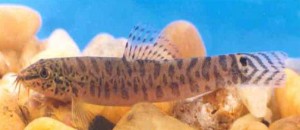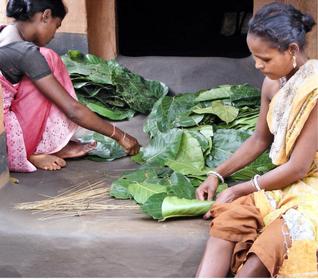 There is a new fear that has gripped biologists in recent times owing to a number of studies and research done on marine species around the world. The fear is that over fishing is killing many small and big fishes in masses, pushing them towards extinction at a very fast pace. The threat is now being felt closer home in India, as an IUCN study reveals that aquatic freshwater species in the western ghats are showing ‘tendencies of extinction’.
There is a new fear that has gripped biologists in recent times owing to a number of studies and research done on marine species around the world. The fear is that over fishing is killing many small and big fishes in masses, pushing them towards extinction at a very fast pace. The threat is now being felt closer home in India, as an IUCN study reveals that aquatic freshwater species in the western ghats are showing ‘tendencies of extinction’.
The International Union for Conservation of Nature (IUCN) ‘Red list’ has warned that few freshwater species of Western Ghats are undergoing collateral damage due to the rapid economic development. The list states that freshwater fish, molluscs, and several aquatic plants have started showing traits that threaten their existence.
The alarming news is that according to the IUCN report more than 37 percent of freshwater fishes in India are on the verge of extinction. The main reason for this is unquestionably rising human demand for fishes and the over harvesting of many of the freshwater species.
Take the case of Deccan Mahseer (Tor khudree) which is one of the most sought-after edible fish. Over the past decade pollution, over-harvesting and the presence of invasive species has pushed the number of this fish to a very low figure. The same is the case with Miss Kerala (Puntius denisonii), another edible variety of fish.
“Water pollution from agricultural and urban sources, over-harvesting and invasive species were the major threats that have led to 16% of freshwater species becoming extinct,” said Sanjay Molur, executive director, Zoo Outreach Organization, in the report.
The report has also revealed that many marine plants, including valuable medicinal plants are becoming extinct in the western ghat region of India. About 28% of aquatic plants with medicinal value have started becoming extinct. For example, Cremnochonchus syhadrensis, an endangered freshwater periwinkle, and a pond weed Aponogeton satarensis are slowly becoming extinct.
“If we continue to degrade our freshwater systems and over-harvest our resources, we will not only lose biodiversity but also many valuable services that nature provides us for free,” says Rajeev Raghavan, Conservation Research Group at St. Albert’s College, Kochi
With fishes rapidly decreasing in the area, what is also threatened is the source of livelihood of many communities who rely solely on marine plants and aquatic species.
The key outcomes of the report as per iucn.org are,
• The Western Ghats hotspot, originally designated for its plant species, is confirmed as a globally significant centre of diversity and endemism for freshwater species.
• Close to 16% of the 1,146 freshwater taxa assessed are threatened with extinction, with a further 1.9% assessed as Near Threatened. Approximately one-tenth of species were assessed as Data Deficient.
• Within the Western Ghats, catchments in the southern part of the region in Kerala, Tamil Nadu and southern Karnataka have the highest freshwater species richness and levels of endemism, but also contain the highest number of threatened species.
• Although many protected areas are located within or near areas of the richest freshwater diversity, the southern Western Ghats region also experiences the highest level of threat to freshwater species.
• The northern Western Ghats region within Maharashtra has a lower recorded freshwater diversity than the southern region. Although this trend supports the expected relationship between species richness and rainfall, the lower diversity is probably due to inadequate surveys in the freshwater ecosystems of the west flowing rivers of the northern Western Ghats.
• Aquatic plants and fishes are the most heavily utilized freshwater groups in the Western Ghats. Twenty-eight percent of aquatic plants are harvested for medicinal purposes, and 14% and 13%, as food for people and animals, respectively. More than half of all fish species are harvested for human consumption, and a growing percentage (37%) of species are captured for the aquarium trade. Eighteen percent of mollusc species are used as food for humans.
• The main threats impacting freshwater biodiversity in the Western Ghats include pollution (with urban and domestic pollution ranking as the worst threats followed by agricultural and industrial sources of pollution), species use (including fishing and collection for the aquarium trade), residential and commercial development, dams and other natural system modifications, alien invasive species, agriculture and aquaculture, energy production and mining.
The IUCN reports comes as a warning for India to gear up and save the fishes while there is still a little time left. Stricter fishing laws, more protected areas and a widespread public awareness campaign are the need of the hour. Read more about the report here.
Related Stories:
Freshwater Crocodiles back from the Brink of Extinction
Are Marine Species Inching Towards Mass Extinction?
Article reference: DNAIndia






Disturbing Domino effect !!!
True Amit. Man seizes but forgets to restore the wonders of nature. And the loss will be ours in near future.